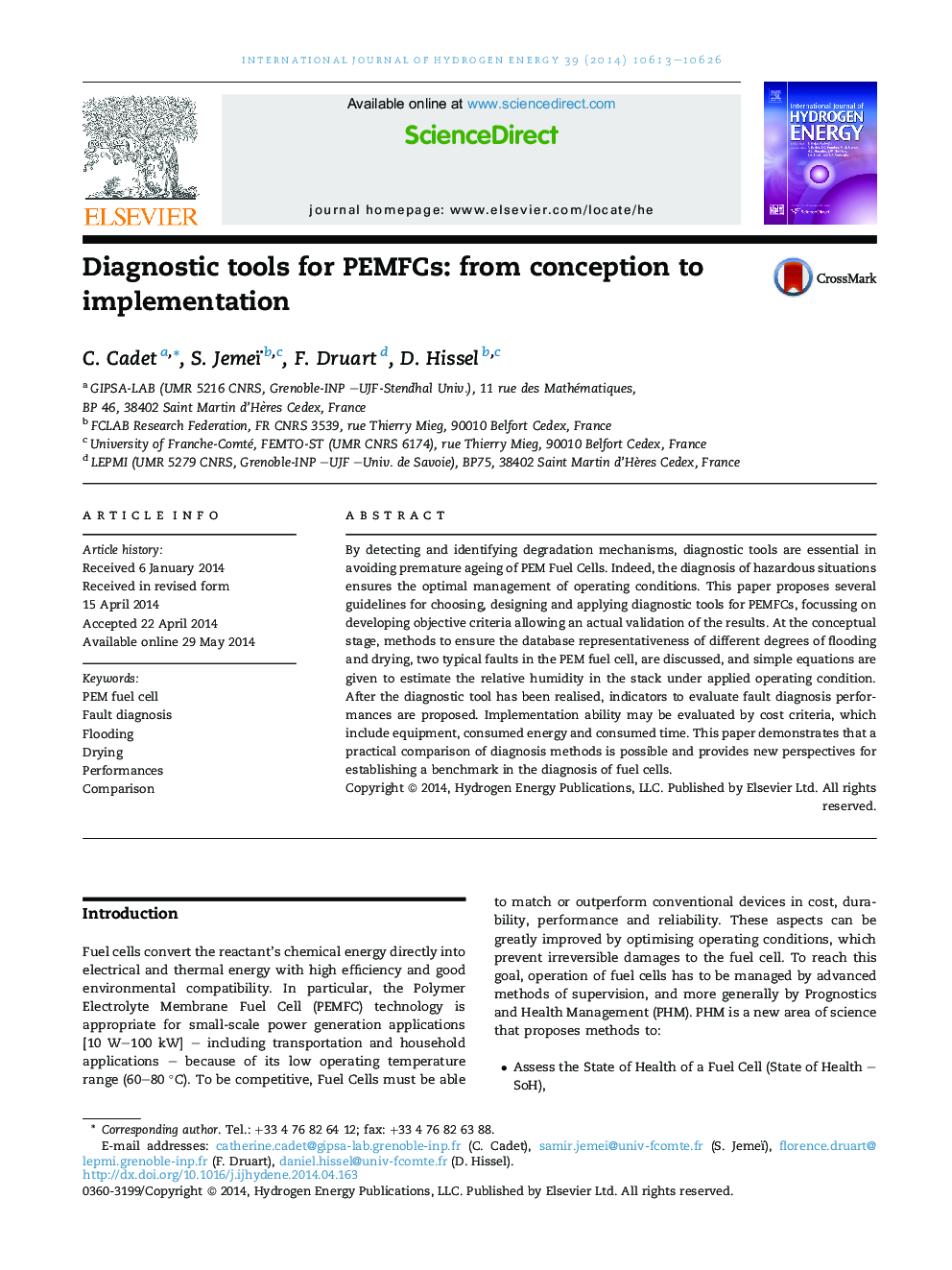| Article ID | Journal | Published Year | Pages | File Type |
|---|---|---|---|---|
| 1276188 | International Journal of Hydrogen Energy | 2014 | 14 Pages |
•A method to quantify the degrees of faults (flooding and drying) is studied.•Mains characteristics of classification algorithms are described.•Best indexes to validate the diagnosis results are presented.•Implementation aspects are detailed: energy, time consumption and equipment.
By detecting and identifying degradation mechanisms, diagnostic tools are essential in avoiding premature ageing of PEM Fuel Cells. Indeed, the diagnosis of hazardous situations ensures the optimal management of operating conditions. This paper proposes several guidelines for choosing, designing and applying diagnostic tools for PEMFCs, focussing on developing objective criteria allowing an actual validation of the results. At the conceptual stage, methods to ensure the database representativeness of different degrees of flooding and drying, two typical faults in the PEM fuel cell, are discussed, and simple equations are given to estimate the relative humidity in the stack under applied operating condition. After the diagnostic tool has been realised, indicators to evaluate fault diagnosis performances are proposed. Implementation ability may be evaluated by cost criteria, which include equipment, consumed energy and consumed time. This paper demonstrates that a practical comparison of diagnosis methods is possible and provides new perspectives for establishing a benchmark in the diagnosis of fuel cells.
